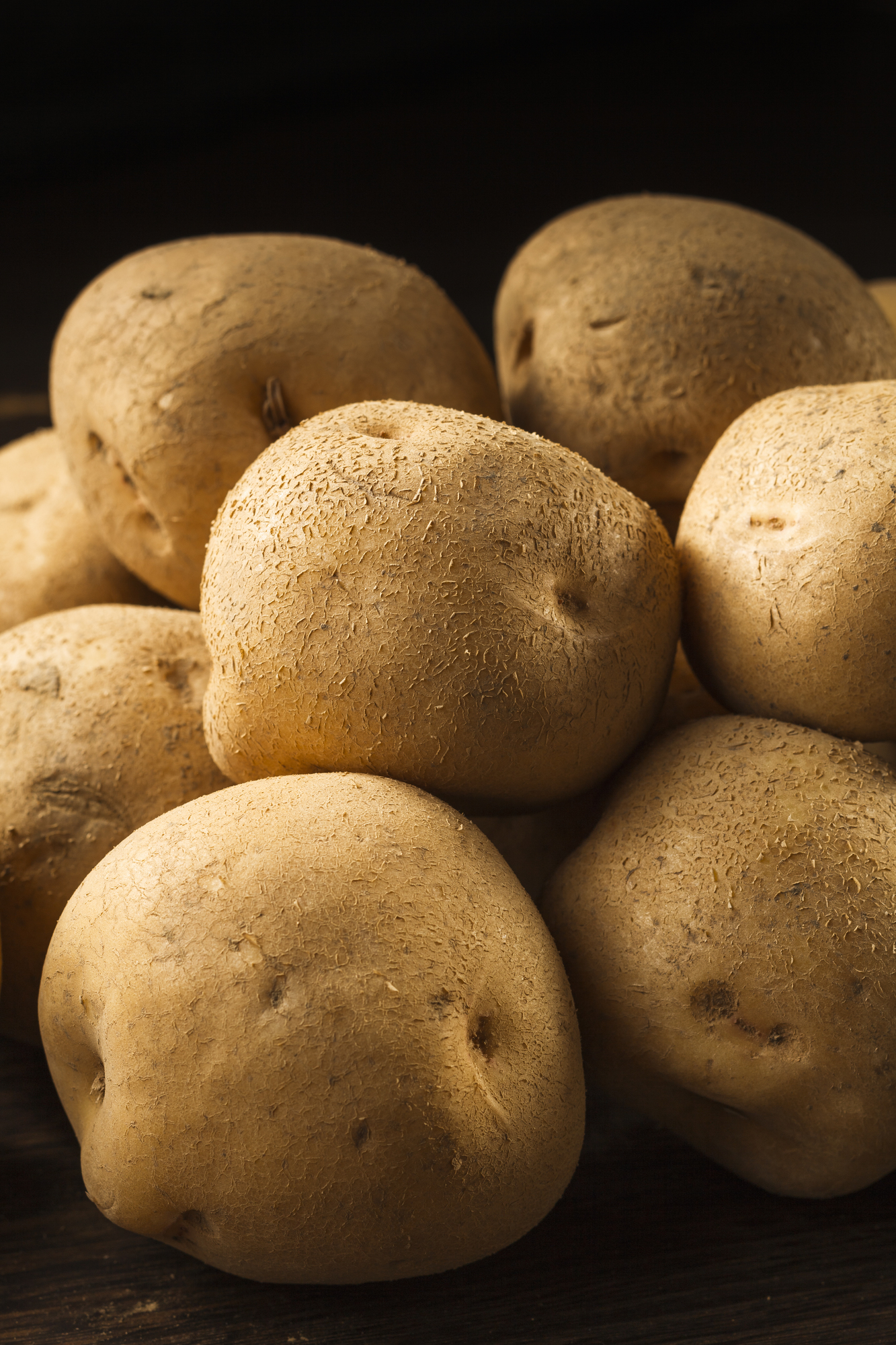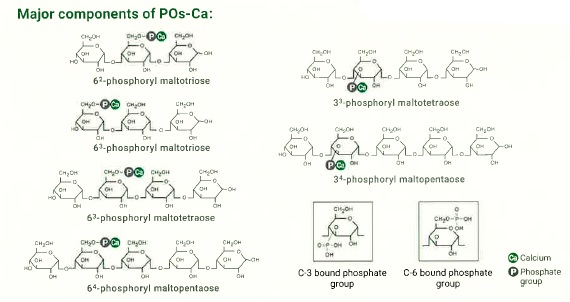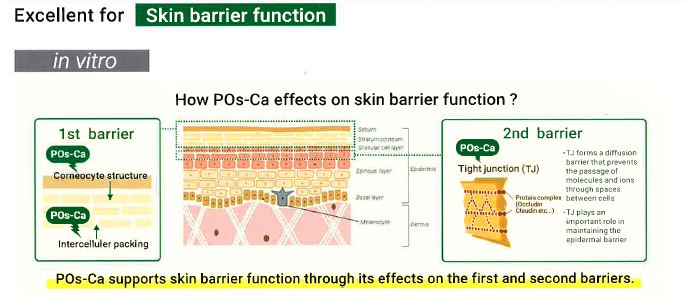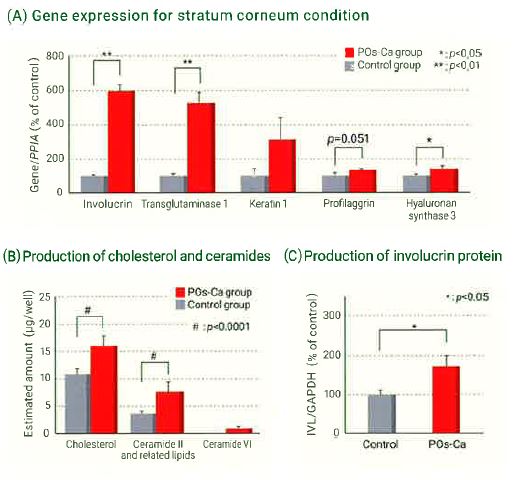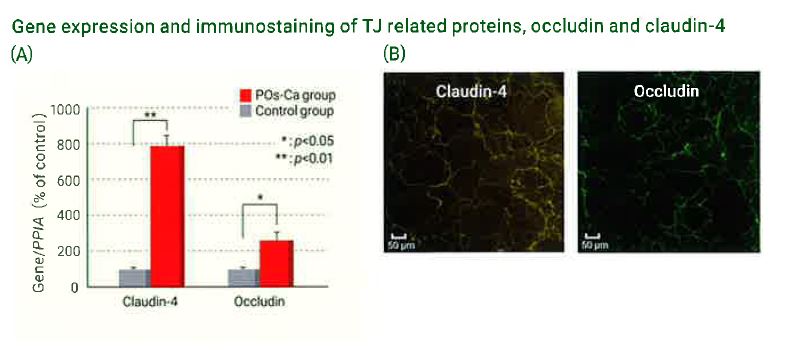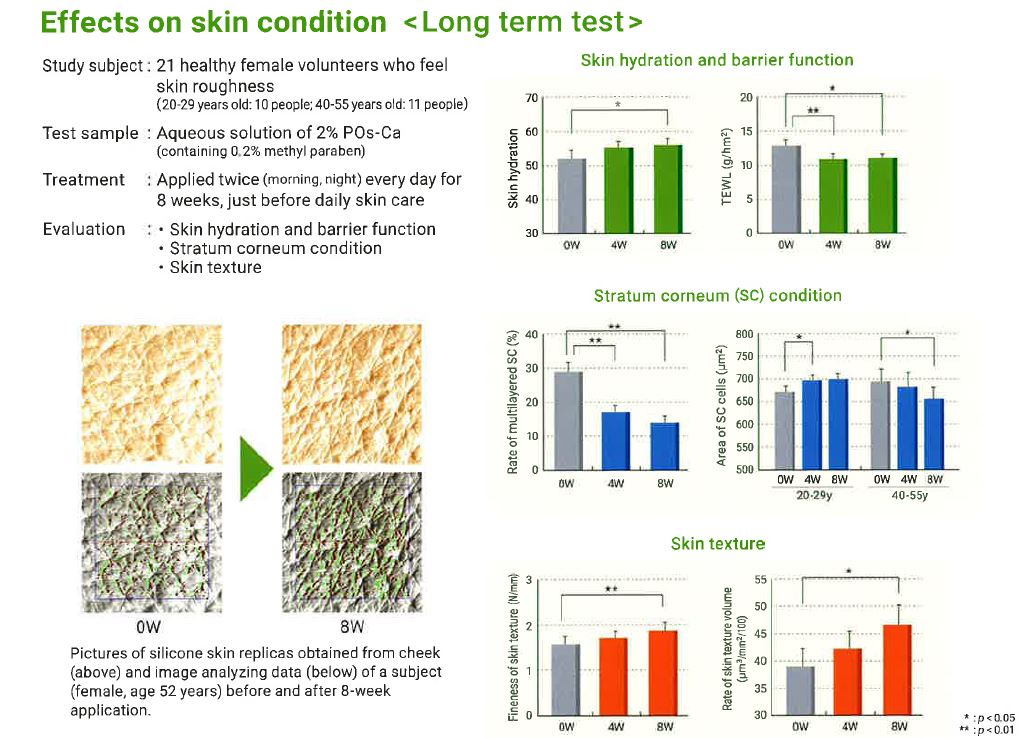POs-Ca™ < Cosmetic Ingredient >
POs-Ca
>>Click here to know about cosmetic applications
Structure and Manufacturing Process
Characteristics
Skin-Care
[ 1st barrier ]
[ 2nd barrier ]
Scalp-Care
[ Proliferation of follicle dermal papilla cells ]
Specifications
Specifications
For further information please contact us.
Name
| Trade name | POs-Ca |
| INCI name | Calcium Phosphoryl Oligosaccharides |
| Chinese INCI name | 磷酰基寡糖钙 |
Other Information
| Cas No. | 1124316-47-7 |
| Certification | ISO 90001 |
Contact Us
| for enquiries, contact | Global Sales Department, Technical Sales Division, Glico Nutrition Co., Ltd. 4-6-5, Utajima, Nishiyodogawa-ku, Osaka 555-8502 Japan FAX: +81 6-6477-8673 E-MAIL: g-ingredients@glico.com * When you contact us, please let us know your name, company and country in the message. |

